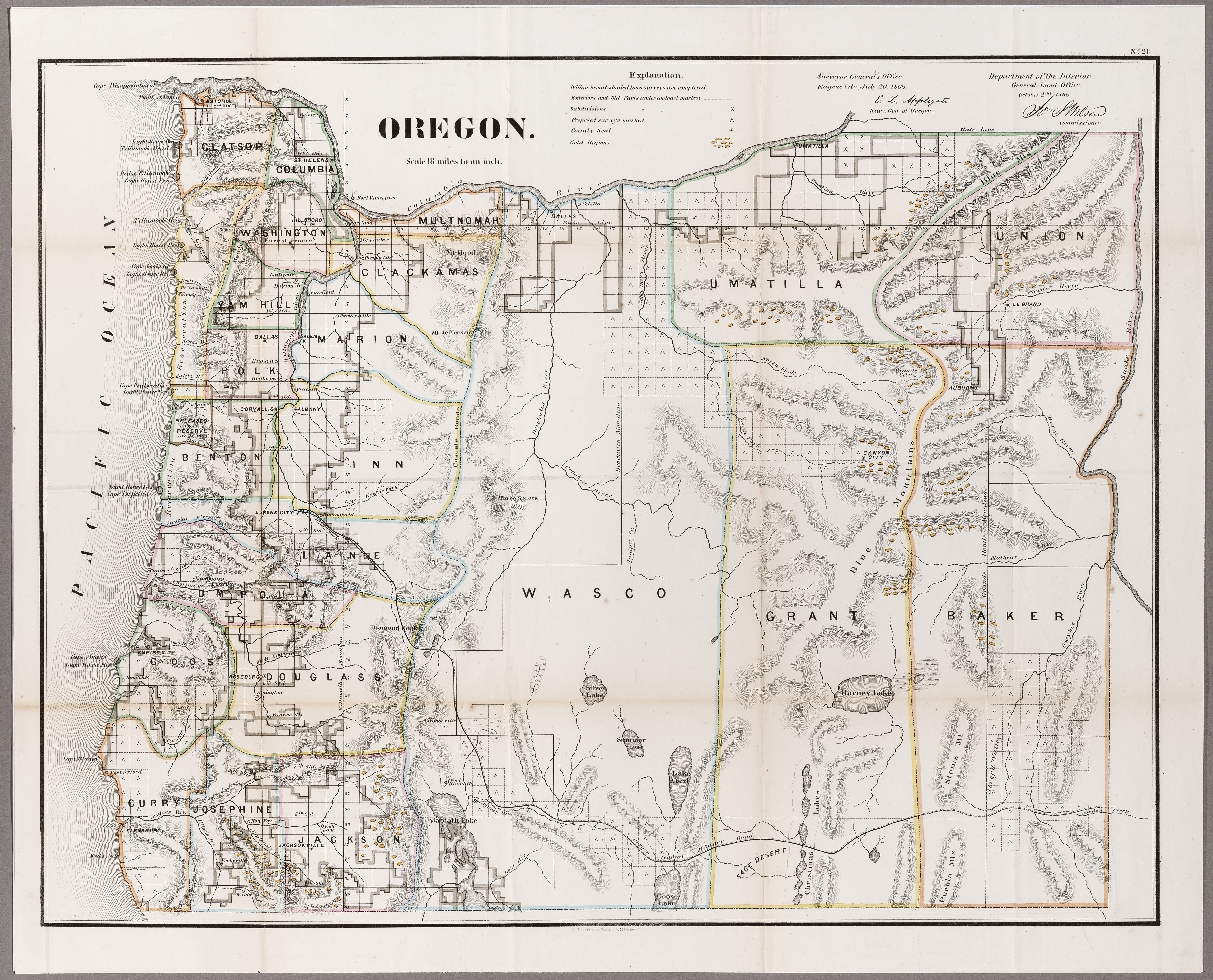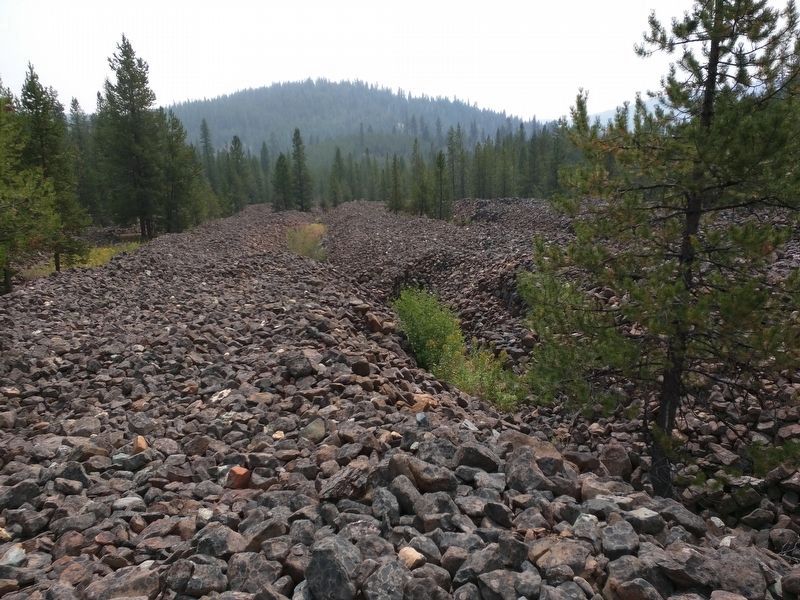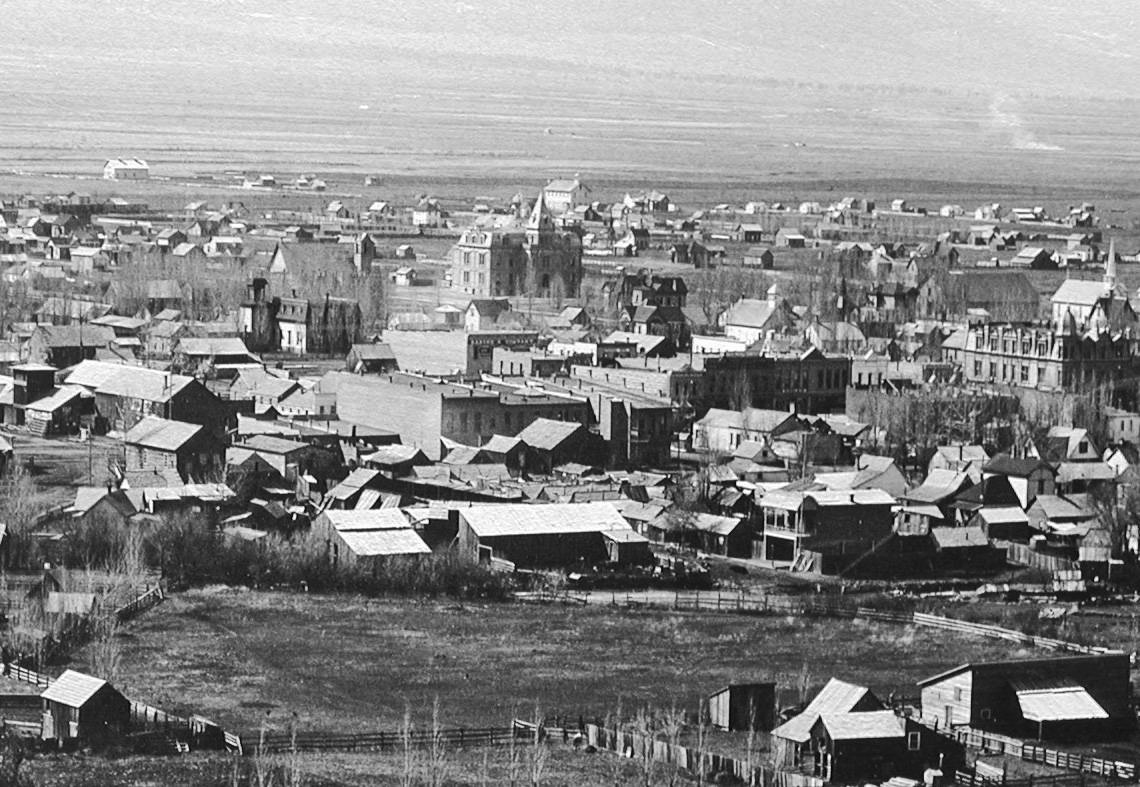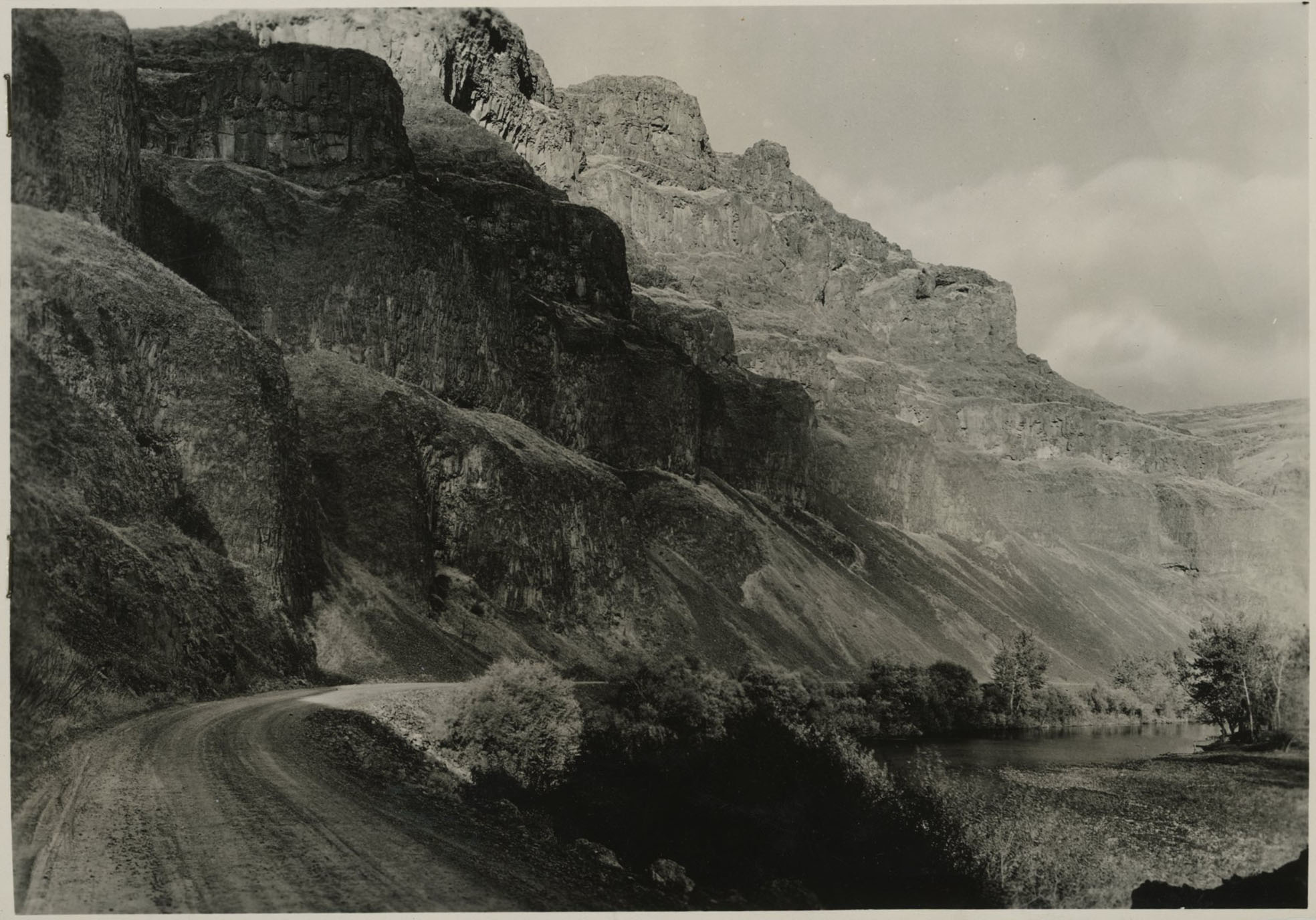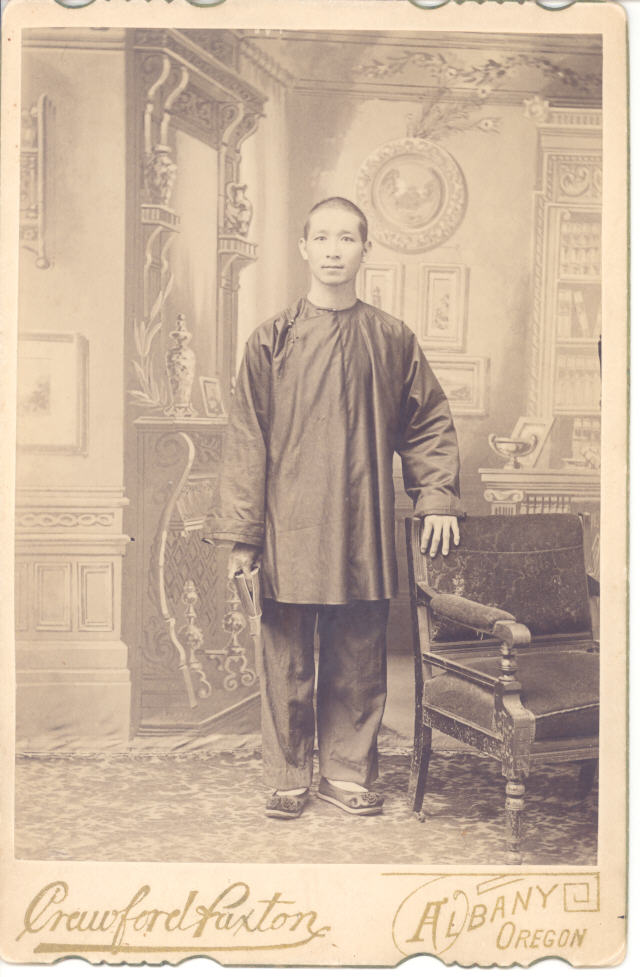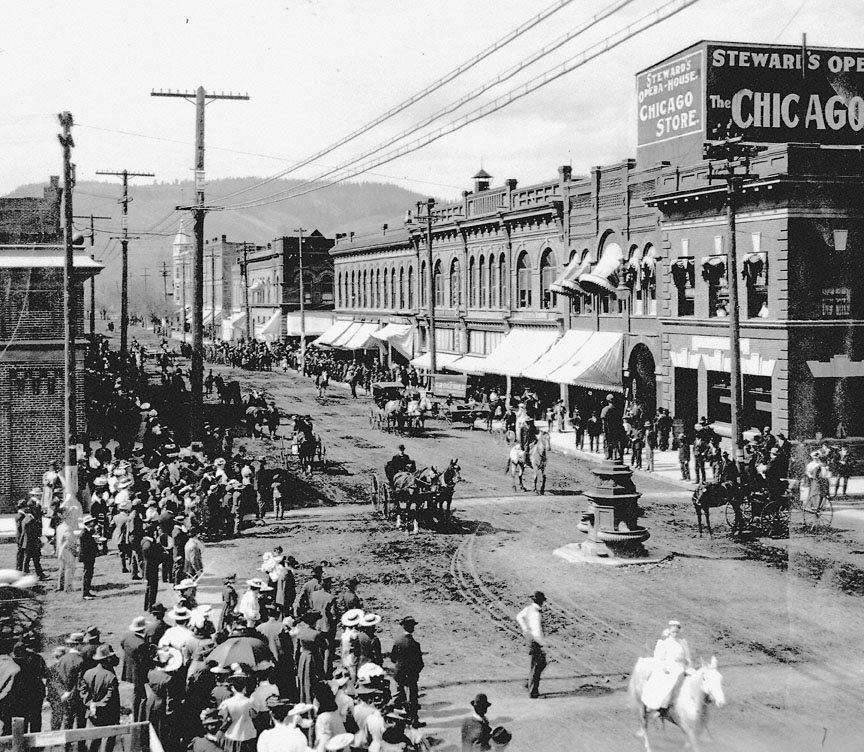Two Dragon Camp was an isolated, 2.5-acre placer mining camp in the Camp Carson Historic Mining District, roughly twenty-one miles southwest of La Grande. Occupied for a two- to five-year period between 1870 and 1890, an estimated one hundred Chinese miners worked at the site at its peak of operation, constructing and fortifying existing ditches for the area's placer mining operations.
Situated in northeastern Oregon’s Blue Mountains, along Tanner Gulch, the site is surrounded by steep, rugged, timbered hills on three sides and is bordered on the north by a placer ditch. The camp rested on a small, natural terrace and was fortified by berms and wooden structures. Its one-hour-by-foot distance from Camp Carson and its distance from actual mining activity suggests concern for the relative safety of the Chinese contract mining crew that inhabited the Two Dragon Camp site.
In 1863, Tanner Gulch placer activity yielded promising gold deposits and non-Chinese miners from Sumpter area gold camps made their way east along mountain game trails to Tanner Gulch. As early as 1867, Chinese laborers, employed by Chinese mining concerns, were constructing ditches to divert water in the Tanner Gulch area for placer mining. Two Dragon Camp was abandoned after short-lived habitation due to its difficult, isolated location and because the gold deposits on Tanner Gulch proved less substantial than had been hoped. There is scant archeological record of the site's reuse after Chinese miners moved on to camps in the Sparta mining area, where other Chinese men employed by Ah Fat, Le Tew, and Ah Sing began construction of the Sparta Ditch in 1871.
Two Dragon Camp provides a visible and archeological record of the Chinese miners who worked and lived there. Remnants of timbered structures, mining and kitchen implements, foodstuff containers and opium canisters, some reworked for other camp functions, serve to deepen understanding of the contributions Chinese laborers made to the economic stability, viability, and eventual permanent settlement of northeastern Oregon.
The orientation and functions of buildings and an examination of twenty-five features—such as platforms, cabins, and berms—suggest that the miners situated structures according to Chinese geomancy principles, or feng shui, to encourage good health and spiritual well-being. While feng shui principles are commonly practiced in China, it has been unclear how the practice was demonstrated at what were considered temporary Chinese camps in America.
The excavation of Two Dragon Camp was supervised, interpreted, and recorded by U.S. Forest Service archeologist George R. Mead from 1991 to 1992, with assistance from Gary Keenan and several student volunteers from La Grande High School. Mead also named the site.
-
![]()
Survey map of Oregon by Elisha L. Applegate, showing gold mines (marked by gold nuggets), 1866.
Courtesy Oregon Hist. Soc. Research Lib., G4290.1866.A66
-
![]()
Blue Mountains.
Courtesy Oregon Hist. Soc. Research Lib., Orhi13937
Related Entries
-
![Ah Hee Diggings (Chinese Walls)]()
Ah Hee Diggings (Chinese Walls)
The Ah Hee Diggings, also called the Chinese Walls, are sixty acres of …
-
![Baker City Chinatown]()
Baker City Chinatown
For over seven decades, Baker City had an area referred to as Chinatown…
-
![Blue Mountains]()
Blue Mountains
The Blue Mountains, perhaps the most geologically diverse part of Orego…
-
![Chinese Americans in Oregon]()
Chinese Americans in Oregon
The Pioneer Period, 1850-1860 The Cantonese-Chinese were the first Chi…
-
![Chinese Massacre at Deep Creek]()
Chinese Massacre at Deep Creek
Of the many crimes and injustices committed against early Chinese immig…
-
![Chinese mining in Oregon]()
Chinese mining in Oregon
The city of Guangzhou (formerly known to Westerners as Canton) is the c…
-
![La Grande]()
La Grande
La Grande, the seat of Union County, is nestled in the eastern foothill…
Related Historical Records
Map This on the Oregon History WayFinder
The Oregon History Wayfinder is an interactive map that identifies significant places, people, and events in Oregon history.
Further Reading
Rohe, Randall. “Chinese Camps and Chinatowns: Chinese Mining Settlements in the North American West.” In Josephine Lee, et.al., eds. Re/collecting Early Asian America: Essays in Cultural History. Philadelphia: Temple University Press, 2002, pp. 31-53.

